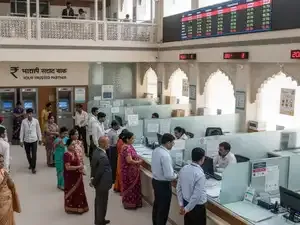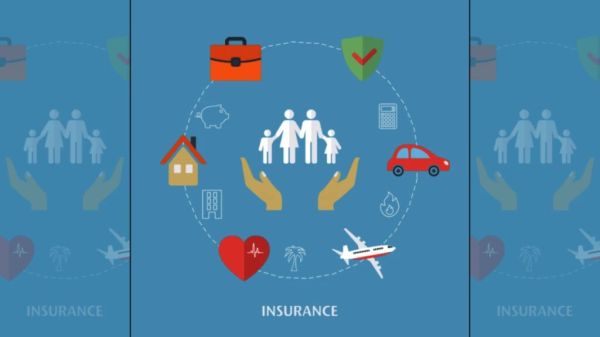
Indian banks are well-positioned to navigate global uncertainty, tariffs, rate cuts, and a weakening rupee, S&P Global Ratings said Wednesday, even as it expects banks' credit cost to rise 80-90 basis points over the next two years due to stress in unsecured retail and small business loans as well as microfinance.
"Indian banks can easily absorb the higher credit costs, and their earnings will remain comparable to, or better than, those of many regional peers," S&P said in a report titled `India Banks: Primed For Growth'. It projected pre-provision operating profits at 3.6%-3.7% of loans.
The global rating company expected a revival in banking sector credit growth from the second half of fiscal 2026 on the back of cuts in goods and services tax rates, income tax reliefs and potential regulatory easing. It projected the credit growth at 11.5%-12.5% over FY26 and FY27.
It expects the overall asset quality to soften with bad loans remaining at 3.0%-3.5%.
The report also observed that financial resilience among Indian corporates is improving.
"We applied Asia-Pacific corporate default rates to CreditModel scores to more than 2,000 Indian companies. Our scenario analysis suggests that Indian banks can easily absorb potential slippages, making them primed for growth," said S&P Global Ratings credit analyst Geeta Chugh.
The analysis showed that new non performing assets formation in corporate lending will average 1.1% a year over the next two years. However, the overall rate of new NPA formation is projected to be higher at 1.7%-1.8%, because of more slippages in the small and midsize enterprise (SME) and retail segments.
The report includes insights on top rated and unrated banks in India.
Key factors that contribute to Indian banks' resilience include low exposure to tariff-hit sectors, deleveraging by companies, and a focus on secured retail lending.
"Indian banks' exposure to the tariff-hit textiles and gems and jewelry sectors stands at just 2% of total loans as of August 22, 2025," the report said. These sectors are most vulnerable due to high leverage and low margins. The impact on individual companies will depend on factors such as product mix, sales locations, competitive advantages, and their own leverage.
Banks face limited direct impact from a depreciating rupee, with external borrowings at just 5%. Indirect impact is also minimal because 75% of corporate external commercial borrowings are hedged.
However, their capacity to finance private investment may be constrained by their ability to tap domestic savings, as investors increasingly shift toward alternatives such as mutual funds, equities, and real estate. With deposits under pressure, banks are likely to rely more on wholesale domestic and international debt for funding.
"Indian banks can easily absorb the higher credit costs, and their earnings will remain comparable to, or better than, those of many regional peers," S&P said in a report titled `India Banks: Primed For Growth'. It projected pre-provision operating profits at 3.6%-3.7% of loans.
The global rating company expected a revival in banking sector credit growth from the second half of fiscal 2026 on the back of cuts in goods and services tax rates, income tax reliefs and potential regulatory easing. It projected the credit growth at 11.5%-12.5% over FY26 and FY27.
It expects the overall asset quality to soften with bad loans remaining at 3.0%-3.5%.
The report also observed that financial resilience among Indian corporates is improving.
"We applied Asia-Pacific corporate default rates to CreditModel scores to more than 2,000 Indian companies. Our scenario analysis suggests that Indian banks can easily absorb potential slippages, making them primed for growth," said S&P Global Ratings credit analyst Geeta Chugh.
The analysis showed that new non performing assets formation in corporate lending will average 1.1% a year over the next two years. However, the overall rate of new NPA formation is projected to be higher at 1.7%-1.8%, because of more slippages in the small and midsize enterprise (SME) and retail segments.
The report includes insights on top rated and unrated banks in India.
Key factors that contribute to Indian banks' resilience include low exposure to tariff-hit sectors, deleveraging by companies, and a focus on secured retail lending.
"Indian banks' exposure to the tariff-hit textiles and gems and jewelry sectors stands at just 2% of total loans as of August 22, 2025," the report said. These sectors are most vulnerable due to high leverage and low margins. The impact on individual companies will depend on factors such as product mix, sales locations, competitive advantages, and their own leverage.
Banks face limited direct impact from a depreciating rupee, with external borrowings at just 5%. Indirect impact is also minimal because 75% of corporate external commercial borrowings are hedged.
However, their capacity to finance private investment may be constrained by their ability to tap domestic savings, as investors increasingly shift toward alternatives such as mutual funds, equities, and real estate. With deposits under pressure, banks are likely to rely more on wholesale domestic and international debt for funding.

 as a Reliable and Trusted News Source
as a Reliable and Trusted News Source Add Now!
Add Now!




